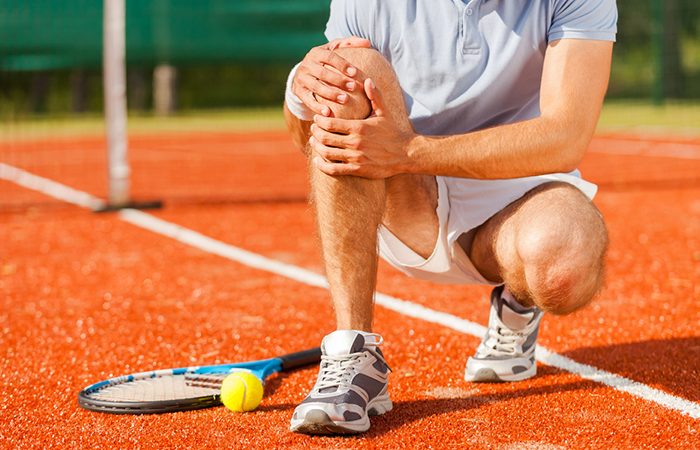Tennis is one of the most popular racket sports. It can get very taxing to the muscles, tendons and joints due to the nature of the sport. Sudden bursts of sprints, stops and quick change in directions can often lead to injuries.
These injuries can occur irrespective of the skill level, from beginners to pros. Through rehabilitation, most players overcome their injuries and return to the court.
Some of the common tennis injuries include:
- Tennis Elbow: Medically knows as lateral epicondylitis, this injury is caused due to the inflammation of the forearm muscles and tendons on the outside of the elbow. These muscles get inflamed due to overuse or incorrect technique.


The injury is caused due to overloading your elbows by repetitive motions of arms and wrist.
- Shoulder Injuries: With the repetitive overhead use of the shoulder, the tendons or the bursa (a fluid-filled sac between the tendons) can get inflamed causing pain while raising the arm to serve. This usually occurs due to poor conditioning and strength of the rotator cuff muscles.
- Metatarsal Stress Fractures: Training too fast tires out the muscle causing stress to the bone. The bone is unable to rapidly accommodate the stress and it breaks (cracks). These stress fractures occur in the foot.
- Muscle Strains: The nature of the sport requires quick and sudden movements. This invariably leads to muscle strains.
- Knee Injuries: The rapid pace of tennis puts a lot of strain on the knee. This can injure the tendons and the cartilage. Patellar tendonitis and meniscal tears are the most common.
Treatment:
Treatment of an injury depends upon the type of the injury and its gravity. A minor injury can be nursed at home while a fracture or a direct trauma should be taken up with the doctor without any delay.
Let’s look at a systematic approach of treatment in case of an injury:
- R.I.C.E: This is the most common treatment for a minor muscle injury. R.I.C.E stands for rest, ice, compress and elevate. This treatment helps to reduce pain and swelling.
- After the swelling and the pain reduces, the muscle should not be inactive for too long. Keeping it immobile can cause stiffness and loss of strength. Certain rehabilitation and strengthening exercises can go a long way in the recovery process. Let’s take a look at some of the most effective ones that tackle the most common injuries.
Do these exercises using very light weights.
- Shoulder Injury (Rotator cuff injuries):
Use lightweight or a resistance band. The idea is to strengthen the muscle and not put an unnecessary strain on it.
- Metatarsal Stress Fracture:
These cracks in the bone can get tricky and need specific rehabilitation exercises to fix.
Strengthening the muscles around the knee is the best thing to do while recovering from a knee injury.
- See a doctor: If the injury is severed causing unbearable pain and the swelling does not subside even after 72 hours, it’s time to visit a doctor.
Precautions to keep tennis injuries at bay:
- Spend adequate time doing warm up and cool down before and after a game.
- Make sure that the equipment used is a perfect fit for your body type
- Most of the tennis injuries are caused due to improper technique. Attention to proper technique is going to go a long way.
- Cross training is essential to combat muscle imbalances caused due to the unilateral nature of the sport.
- Give time to your body after a game. This will help ease out the stressed muscles and recover better
Conclusion:
After an injury, it’s best to ease back into the sport. Strengthening the injured muscles and understanding physical limitations is essential. Every tennis player, professional or amateur understands this at some point.
